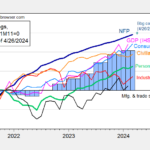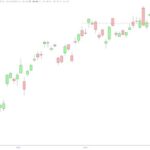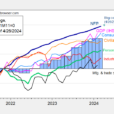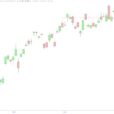
Last week I said that investors have plenty to worry about, but also that many of the traditional reasons to abandon ship—chiefly extended valuations and political paralysis and risk—perhaps weren’t as valid as many think they are. The most convincing argument for not panicking despite extended valuations is that ample global liquidity and low-interest rates remain as support for equities and credit markets. I imagine that his idea has been put down on page one of most investors’ playbook since the financial crisis. The argument is pretty simple. As long as central banks are on the bid, their purchases of bonds—and other assets—will drive private investors into riskier markets. Known as the portfolio balancing effect, this is recognised to operate via both the stock and flow of central banks’ balance sheets. Finally, front-end interest rates that are locked at the zero bound—or slow to rise even as the economy recovers—also translates into higher equity prices and tighter spreads. Low rates mean an increase in the future discounted value of cash flows and also encourages investors to pay a higher multiple for the same level of earnings. It also forces investors to seek out yield in private debt markets to reach their return targets, despite the higher risk profile of corporate bonds.
Academics, investors and private sector researchers have been butting heads for the best part of a decade to figure out exactly what unconventional monetary policy means for asset prices. Most agree that it matters, but the question of stocks vs flows as well as the importance of international capital flows in transmitting central bank policies across markets remain thorny and unresolved issues. I can’t possibly resolve these matters here, but the question I am asking this week is fairly straightforward. Are central bank purchases of assets becoming less supportive for equities?
The state of play is as follows. The Fed is raising rates and contemplating how the slowly start unwinding its balance sheet, so markets aren’t getting much help here. But others are providing offsetting support. In the Eurozone, the ECB probably will reduce the pace of QE next year, but the duration of QE also likely will be extended. The central message from Mr. Draghi and his colleagues appear to be that the ECB intends to remain accommodative for a long time, even if the degree of stimulus will be reduced as the economy improves. This sustained stimulus by the ECB has created offshoot pockets of stimulus in countries where central banks are desperately trying to avoid being flooded with all the euros Mr. Draghi is printing. The key example here is the SNB—from the point of view of asset purchases—while interest rate policies in Denmark and Sweden have been similarly affected. In Japan, the BOJ has opted for the nuclear solution in the form of a price target on its 10-year yield, of 0% no less. Many analysts have emphasised that the extent to which the market perceives this as a credible commitment, the bank should be buying fewer bonds. But it also means that if yields creep higher, the BOJ has now effectively committed itself to unlimited purchases of bonds to ensure that its sovereign can issue 10-years bonds virtually for free. This doesn’t seem to be an environment in which global liquidity is turning hostile for risk assets. Not everyone agrees. Citigroup’s Matt King and team—who are excellent—are worried and one of their recent notes has created waves. The first part of Mr. King’s argument is that flows matter much more than stocks, which leads him to the second part; markets are too complacent about the prospect of a reduced pace of central bank balance sheet expansion. From the horse’s mouth:
















